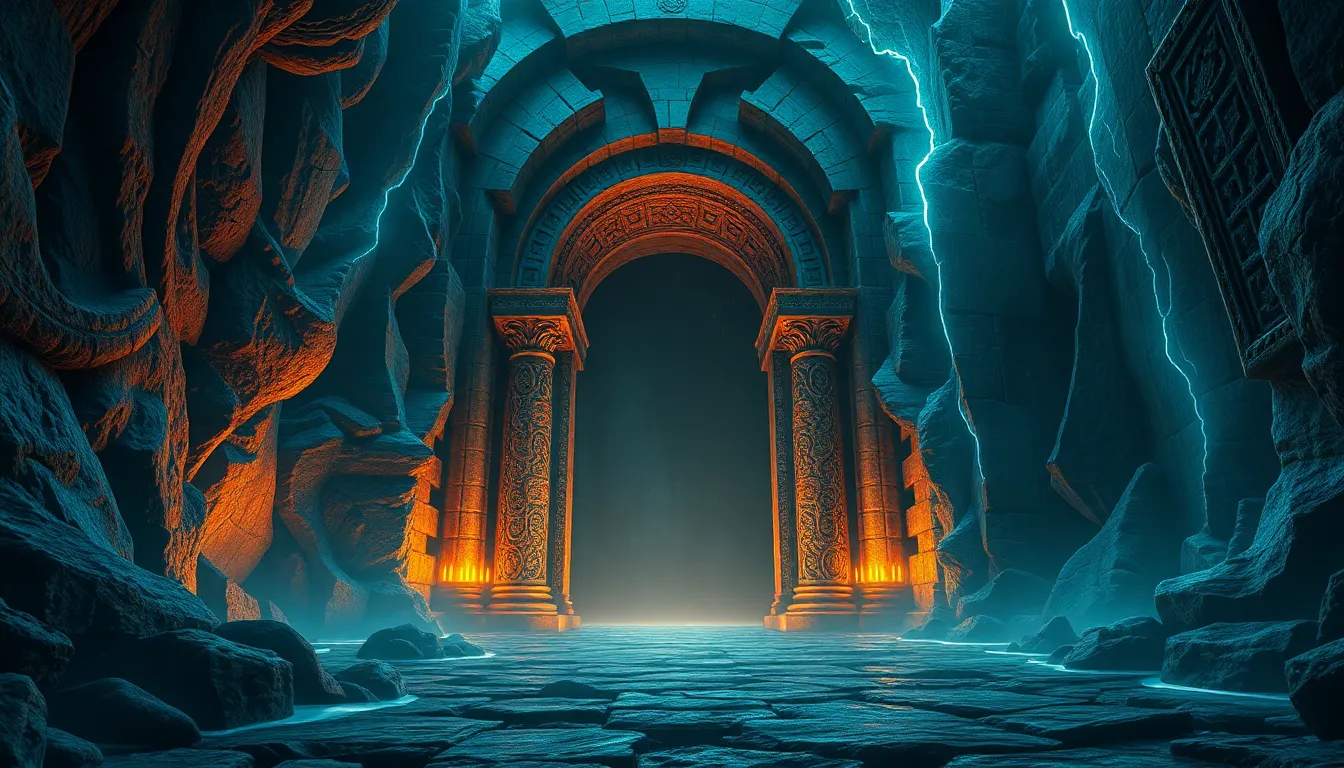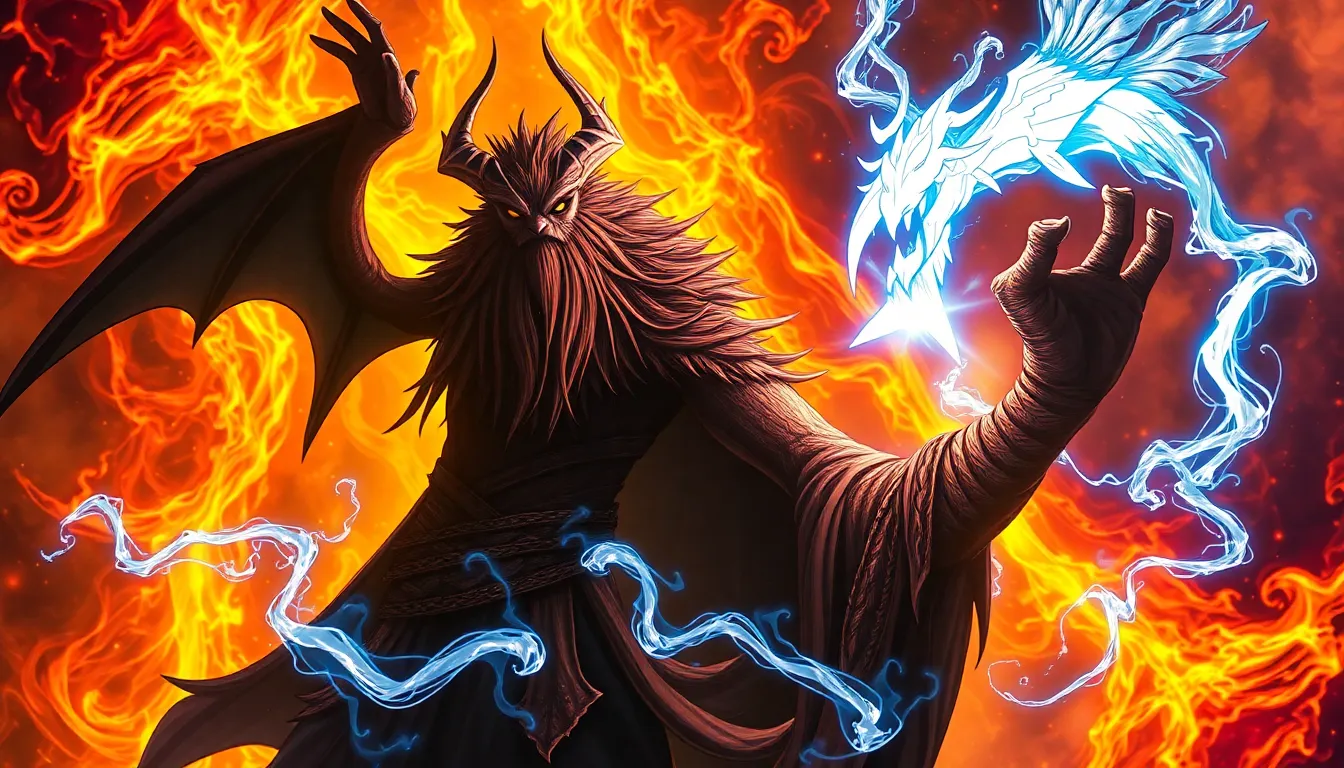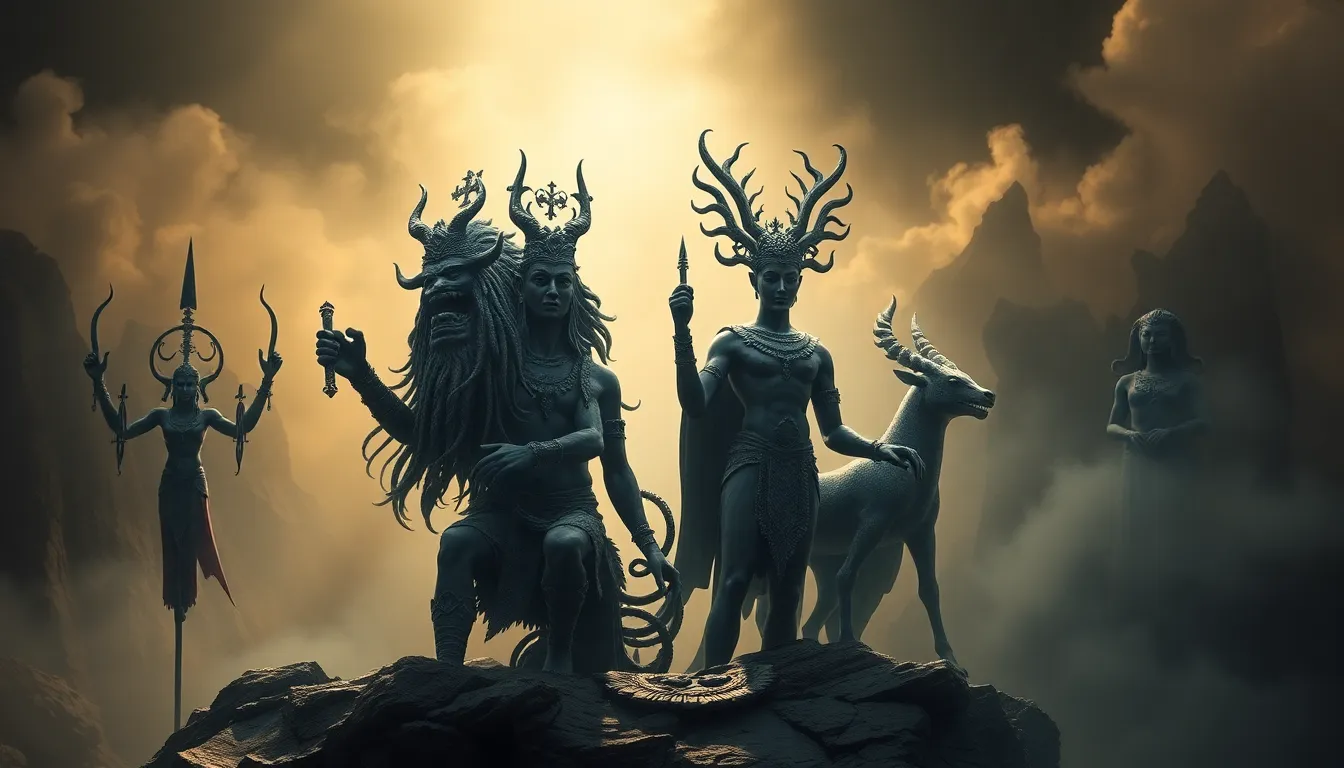The Gates of the Underworld: Myths That Define Life After Death
I. Introduction to Myths of the Underworld
Throughout history, various cultures have developed rich and intricate beliefs regarding life after death. These myths often serve as a reflection of societal values, fears, and hopes surrounding mortality. Understanding these narratives can provide insights into how different civilizations have grappled with the concept of existence beyond the physical realm.
Myths play a crucial role in shaping our understanding of human mortality, offering frameworks through which people can comprehend the unknown. They often illustrate the journey of the soul and the trials it must face, symbolizing the universal quest for meaning in life and death. This article aims to explore the diverse myths surrounding the gates of the underworld, highlighting the unique perspectives of various cultures.
II. Ancient Egyptian Views: The Journey to Duat
In ancient Egypt, the afterlife was a significant aspect of their culture, with the journey to Duat—the realm of the dead—being central to their beliefs.
A. The role of Osiris and the weighing of the heart
Osiris, the god of the afterlife, resurrection, and the dead, played a vital role in guiding souls to their final resting place. Egyptians believed that after death, the heart of the deceased would be weighed against the feather of Ma’at, the goddess of truth and justice. If the heart was lighter, the soul would be deemed worthy and allowed to enter the afterlife; if heavier, it would be devoured by the monstrous Ammit.
B. The significance of the Book of the Dead
The Book of the Dead was a collection of spells and incantations designed to assist the deceased on their journey through Duat. It served as a guide, providing the necessary knowledge to navigate the trials and challenges faced in the underworld. This sacred text was often buried with the dead, ensuring they could access its wisdom.
C. The gates of Duat: trials and tribulations
As souls journeyed through Duat, they encountered several gates, each guarded by formidable beings. These gates represented different trials that tested the soul’s worthiness. Passing through these gates was essential to achieving eternal life, symbolizing the struggle between chaos and order.
III. Greek Mythology: Charon and the River Styx
In ancient Greece, beliefs about the afterlife were deeply intertwined with their mythology, particularly concerning the Underworld and its ferryman, Charon.
A. The concept of the afterlife in ancient Greece
The Greek afterlife was often depicted as a shadowy existence, where souls would reside in the Underworld, ruled by Hades. The journey to this realm began after death, where the soul would be judged and assigned a place based on their actions during life.
B. Charon’s role as the ferryman of souls
Charon was the grim ferryman who transported souls across the River Styx, the boundary between the living world and the Underworld. It was customary for the living to bury their dead with a coin, known as an obol, to pay Charon for his services.
C. The significance of the three gates of the Underworld
The Underworld had three primary gates, each signifying different fates for souls. The gates led to:
- Elysium: A paradise for heroes and virtuous individuals.
- Tartarus: A place of punishment for the wicked.
- Asphodel Meadows: A neutral zone for ordinary souls.
IV. Norse Mythology: Hel and the Afterlife
Norse mythology presents a complex view of the afterlife, primarily characterized by the realms of Hel and Valhalla.
A. The realm of Hel and its overseer
Hel, the realm of the dead, was ruled by the goddess Hel, daughter of Loki. This place was reserved for those who did not die in battle, contrasting sharply with Valhalla, where warriors who died honorably were welcomed.
B. The distinction between Valhalla and Hel
The Norse afterlife was not a one-size-fits-all concept. Valhalla represented glory and honor, while Hel was a place of rest for those who lived less heroic lives. This duality reflected the Norse values surrounding bravery and honor.
C. The journey of souls through the gates of Hel
Souls entering Hel would face a journey through its gates, which were often depicted as formidable barriers. Upon arrival, souls would be judged by Hel and assigned their place within her realm.
V. Hinduism: Yama and the Cycle of Rebirth
In Hinduism, the afterlife is intricately linked with the concepts of karma and reincarnation, overseen by Yama, the god of death.
A. The role of Yama in guiding souls
Yama is responsible for guiding souls to their next destination, ensuring they face the consequences of their actions in life. He is often depicted as a stern figure, but one who also embodies justice and compassion.
B. Concept of karma and its influence on reincarnation
Karma plays a crucial role in determining the fate of souls. Good deeds lead to better rebirths, while negative actions can result in suffering in future lives. This cyclical nature of existence underscores the importance of moral behavior.
C. The gates of Naraka and the path to liberation (moksha)
Naraka is the realm of punishment for souls who have accumulated negative karma. However, it is not eternal; souls can eventually attain moksha, or liberation, by learning from their experiences and breaking the cycle of rebirth.
VI. Buddhism: The Six Realms of Existence
Buddhism presents a unique perspective on the afterlife, focusing on the cycle of rebirth and the concept of Bardo.
A. Overview of Buddhist beliefs on life after death
In Buddhism, death is viewed as a transition rather than an end. The soul continues to cycle through various forms of existence until achieving enlightenment.
B. The significance of the Bardo and the cycle of rebirth
The Bardo is the intermediate state between death and rebirth, where the consciousness experiences various phenomena. The experiences in the Bardo can influence the next rebirth, emphasizing the importance of mindfulness and moral conduct.
C. Gates of the six realms: hell, hunger, animality, humanity, heaven, and the realm of the gods
The six realms of existence represent different states of being:
- Hell: A realm of intense suffering.
- Hungry Ghosts: Beings tormented by insatiable desire.
- Animals: Represent ignorance and lack of awareness.
- Humans: The realm of opportunity for enlightenment.
- Heaven: A temporary state of bliss.
- Gods: Beings with great power but also impermanent.
VII. Mesopotamian Views: The Underworld of Erishkigal
Mesopotamian beliefs provided a complex view of the afterlife, particularly through the story of Inanna’s descent into the Underworld.
A. The duality of life and death in Sumerian culture
Sumerians viewed life and death as interconnected, with the afterlife being a shadowy reflection of the earthly realm. The Underworld, ruled by the goddess Erishkigal, was a place where all souls eventually went.
B. The descent of Inanna and the concept of the Underworld
Inanna’s descent into the Underworld is a powerful narrative that illustrates the trials faced by souls. She confronts various challenges, ultimately leading to her temporary death and resurrection.
C. The gates of Irkalla and the fate of souls
The gates of Irkalla, the Underworld, were guarded by fierce beings, symbolizing the challenges souls faced upon entering. The fate of souls in this realm depended on their actions during life, with the possibility of experiencing a gloomy existence.
VIII. Indigenous Beliefs: The Spirit World
Indigenous cultures worldwide have developed diverse beliefs regarding the afterlife, often emphasizing a connection to the spirit world.
A. Overview of various indigenous perspectives on the afterlife
Many indigenous cultures view the afterlife as a continuation of existence, where ancestors play a significant role in guiding the living.
B. The role of ancestors and



